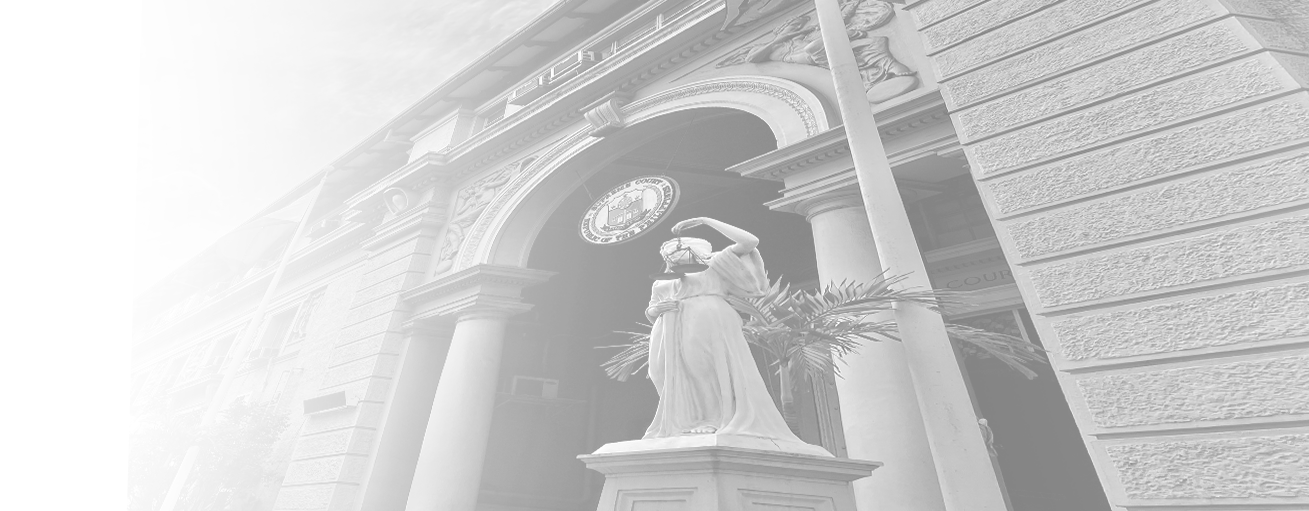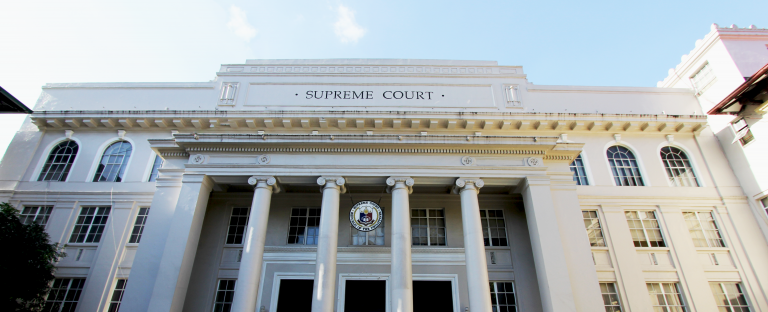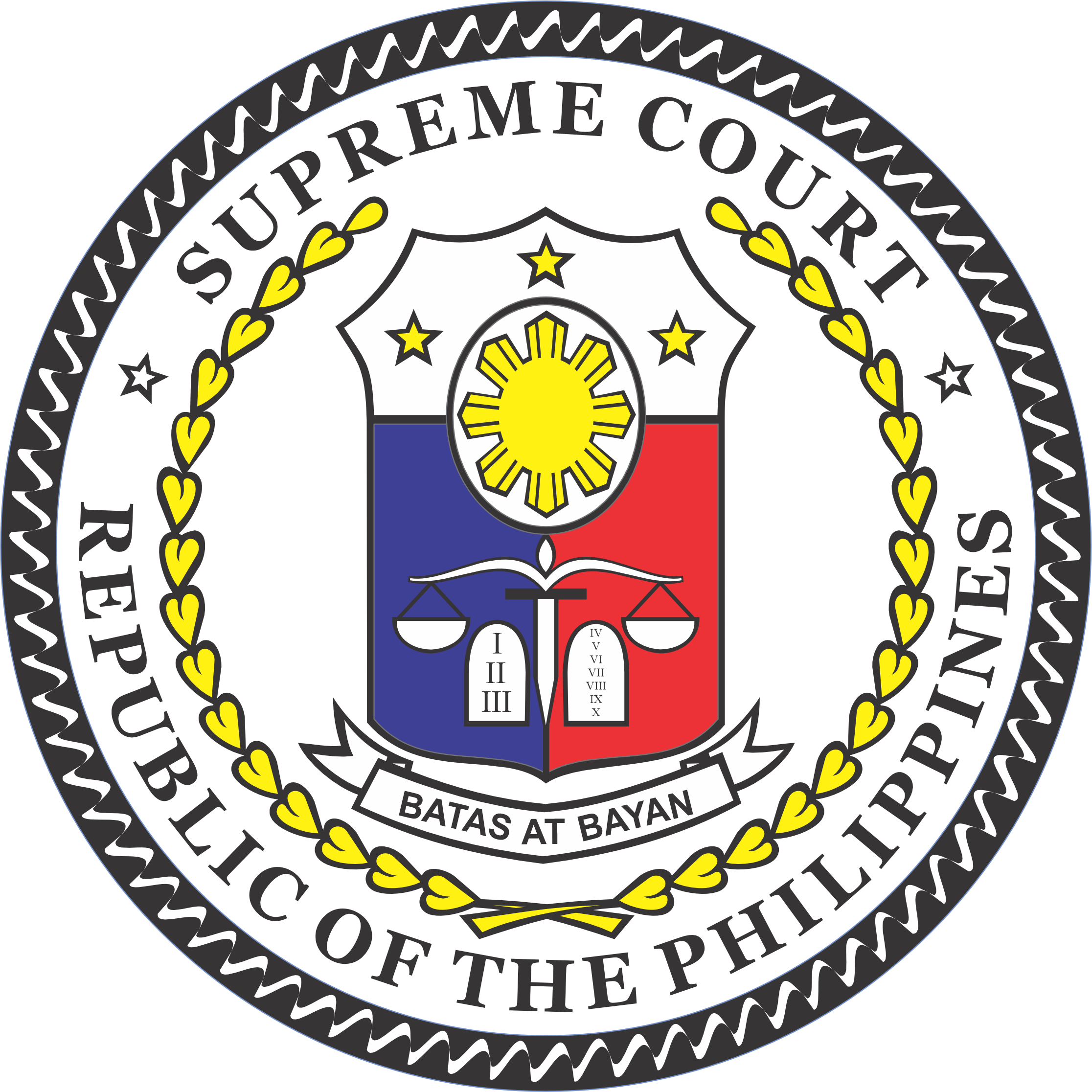

About Us
BRIEF OVERVIEW
BRIEF OVERVIEW

Under the Constitution, the Supreme Court shall be composed of a Chief Justice and fourteen Associate Justices. It may sit en banc or, in its discretion, in divisions of three, five, or seven members. (Art. VIII, §4) Its members shall be appointed by the President from a list of at least three nominees prepared by the Judicial and Bar Council for every vacancy, without need of confirmation by the Commission on Appointments. (Art. VIII, §9)
Members of the Supreme Court are required to have proven competence, integrity, probity and independence; they must be natural-born citizens of the Philippines, at least forty years old, with at least fifteen years of experience as a judge of a lower court or law practice in the country. (Art. VIII, §7) Justices shall hold office during good behavior until they reach the age of seventy years, or become incapacitated to discharge the duties of office. (Art. VIII, §11)
History of the Supreme Court
The Supreme Court of the Philippines is the progeny of the tribunal established by Act No. 136 of the Philippine Commission on June 11, 1901. While there is no umbilical cord joining the Supreme Court to the Real Audiencia de Manila set up by the Spaniards or the Audiencia Territorial de Manila constituted by Major General Elwell Otis, these audiencias nevertheless serve as backdrops in retelling the history of the present Supreme Court.
History of the Supreme Court
The Supreme Court of the Philippines is the progeny of the tribunal established by Act No. 136 of the Philippine Commission on June 11, 1901. While there is no umbilical cord joining the Supreme Court to the Real Audiencia de Manila set up by the Spaniards or the Audiencia Territorial de Manila constituted by Major General Elwell Otis, these audiencias nevertheless serve as backdrops in retelling the history of the present Supreme Court.
Judicial Power and Jurisdiction
Under Article VIII, §1 of the Constitution, the judicial power shall be vested in one Supreme Court and in such lower courts as may be provided by law. This power includes the duty to settle actual controversies involving rights that are legally demandable and enforceable and to determine if any branch or instrumentality of government has acted with grave abuse of discretion amounting to lack of excess of jurisdiction.
The Supreme Court has both original and appellate jurisdiction. It exercises original jurisdiction (cases are directly filed with the SC in the first instance without passing through any of the lower courts) over cases affecting ambassadors, other public ministers and consuls, and over petitions for certiorari, prohibition, mandamus, quo warranto, and habeas corpus. (Art. VIII, §5(1)). It also has original jurisdiction over writs of amparo, habeas data and the environmental writ of kalikasan. On the other hand, the SC has appellate jurisdiction to review, revise, reverse, modify, or affirm final judgments, and orders of the lower courts in:
(a) All cases in which the constitutionality or validity of any treaty, international or executive agreement, law, presidential decree, proclamation, order, instruction, ordinance, or regulation is in question.
(b) All cases involving the legality of any tax, impost, assessment, or toll, or any penalty imposed in relation thereto.
(c) All cases in which the jurisdiction of any lower court is in issue.
(d) All criminal cases in which the penalty imposed is reclusion perpetua or higher.
(e) All cases in which only an error or question of law is involved. (Art. VIII, §5(1), (2))
The Supreme Court has administrative supervision over all courts and court personnel. (Article VIII, §6) It exercises this power through the Office of the Court Administrator.
Rule-making Power
The Supreme Court has the power to promulgate rules concerning the protection and enforcement of constitutional rights, pleading, practice, and procedure in all courts, the admission to the practice of law, the integrated bar, and legal assistance to the underprivileged. Any such rules shall provide a simplified and inexpensive procedure for the speedy disposition of cases, shall be uniform for all courts of the same grade, and shall not diminish, increase, or modify substantive rights. Rules of procedure of special courts and quasi-judicial bodies shall remain effective unless disapproved by the Supreme Court. (Art. VIII, §54(5), Constitution)
Email Us
Please include your name, contact number, email address, and the subject in your email.
Please read our Privacy Notice for the terms on the collection of your personal information.
By using this Query Form, you agree to the collection of personal data. For more information, you may refer to our Privacy Notice.
Email Us
Please include your name, contact number, email address, and the subject in your email.
Please read our Privacy Notice for the terms on the collection of your personal information.
By using this Query Form, you agree to the collection of personal data. For more information, you may refer to our Privacy Notice.






